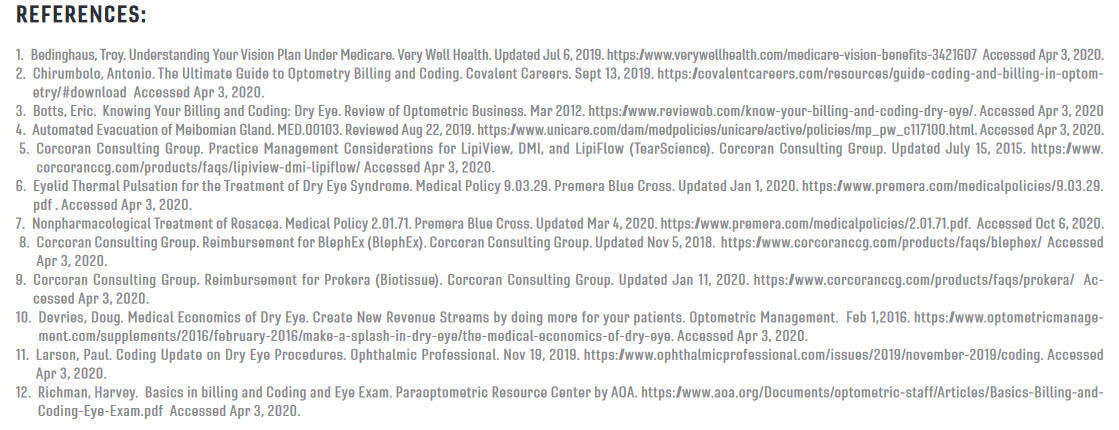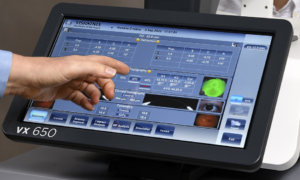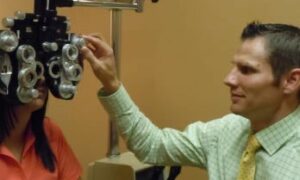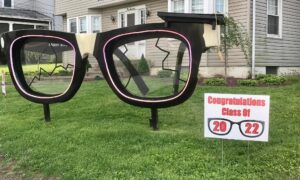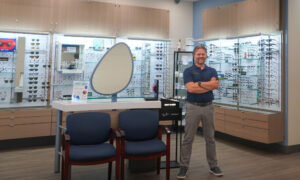
Click HERE, or the image above, to download “Building Your Dry Eye Center of Excellence”
By Tracy Doll, OD, FAAO
March 31, 2021
This article is part of the special report, “Building Your Dry Eye Center of Excellence,” a digital resource guide to creating, building out and generating dry eye revenue. Download the full guide HERE. Dr. Doll’s article is on page 19.
Recent advances in diagnostic and treatment options for ocular surface disease (OSD) have increased both doctor and patient need for clear direction when it comes to billing and coding. The ability to navigate this scene successfully ensures patients receive quality care that is within reach. Any patient identified to have OSD diagnoses in a standard vision exam (92004 or 92014) should return for medical care.1 OSD includes a host of medical conditions that require the same amount of diagnostic and treatment time as other complex ocular disease states (see Table 1 for a brief list). When coding ICD-10 diagnoses, the practitioner should seek to be as specific as possible, including eye or eyelid location and avoiding codes listed as “unspecified.”2
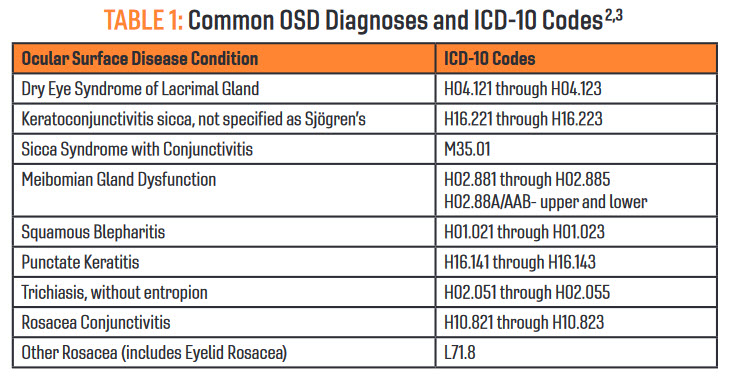
>>Click HERE to visit our new Dry Eye Center of Excellence online portal>>
